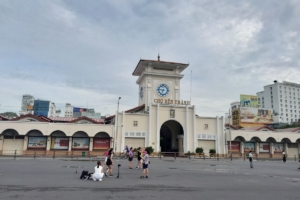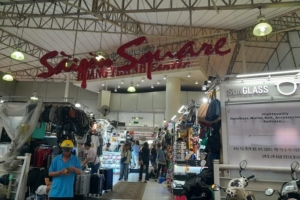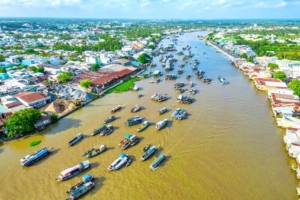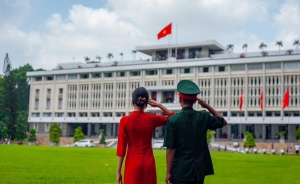The War Remnants Museum in Ho Chi Minh City houses a collection of war-historical images and vivid footage of the brutal Vietnam War, showcasing the evidence and the remnants of the country’s wartime.
The museum becomes a prominent attraction that the Vietnamese and foreigners shudder because the things they see are too horrible and painful.
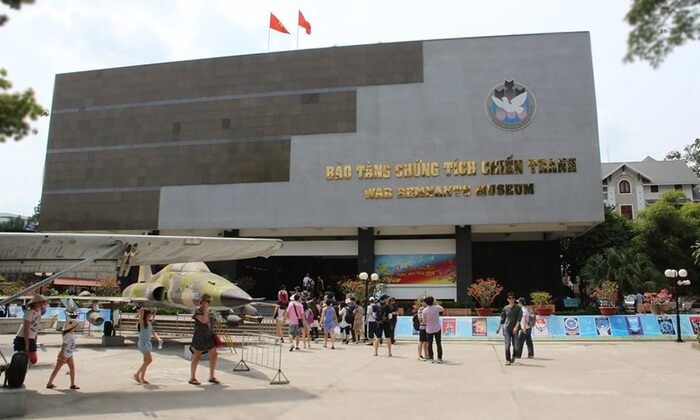
The War Remnants Museum in Saigon
- Address: 28 Vo Van Tan Street, Ward 6, District 3, Ho Chi Minh City, Vietnam
- Opening hours: 7:30 am – 16:30 every day
- Phone: (+ 84) 28 3930 5587 – (+84) 28 3930 6664
- Official web: www.baotangchungtichchientranh.vn
- Entrance fee: 40,000 VND/ guest
- Time to visit the museum: 2 hours on average.
Come and feel! You will know more about the history of the country. And you will gain more love, and gratitude for what the people of the previous generation sacrificed for the peace of the country.
History of War Remnants Museum
Before 1930
This place is the location of Khai Tuong Pagoda built by Gia Long King (1802-1820) to mark the birthplace of Prince Nguyen Phuc Dam (Minh Mang King later).
However, during the French colonial period, in 1880, the government destroyed the temple. Particularly the Buddha image was kept and later transferred to the Blanchard de la Brosse Museum (in French: Musée Blanchard de la Brosse). The old foundation was flattened, and a villa was built on top of it, bearing 28 Testard Street.
The period 1930-1975
In the 1930s, this address was a lawyer’s office, and was hired by Dr. Henriette Bui to work as a gynecologist’s nursing home in 1940. Then, the French government requisitioned the villa, and then they gave it to the Institue of Saigon University.
It was used by the Department of Saigon Medicine University in 1947. The name of Testard Road was changed to Tran Quy Cap under the Republic of Vietnam in 1955.
After 1975
This museum was established on September 4, 1975, with the name “American-Vietnamese Crime Gallery” (Nhà trưng bày tội ác Mỹ-ngụy). November 10, 1990, they changed its name to “Gallery of war crimes of aggression” (“Nhà trưng bày tội ác chiến tranh xâm lược”).
On July 4, 1995 (one week before US President Bill Clinton announced the normalization of diplomatic relations with Vietnam), this museum was renamed the “War Remnants Museum” as it is today.
What to see in the museum
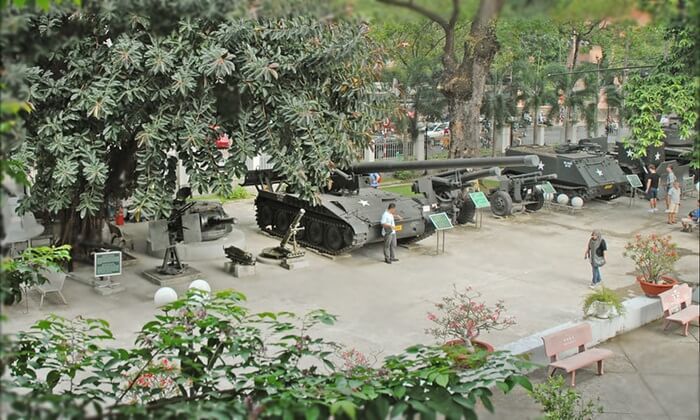
The War Remnants Museum exhibits several artifacts and images during the Vietnam War with topics: American soldiers massacred, tortured, imprisoned, sent chemical toxins, and bombed to destroy the North. Artifacts, such as airplanes, cannons, tanks, guillotines, and two “tiger cages” compartments were built the same size as at Con Dao prison.
There are also rooms: The southwest border war, the war on protecting the northern border, issues of Truong Sa Islands, and the conspiracy of hostile forces.
1. In the yard of the museum
Outside, the museum has exhibitors displaying and introducing Vietnamese national cultural products and the puppet showroom.
There are also big artifacts such as aircraft, tanks, or artillery pieces of both Vietnamese and US soldiers. Young people coming here are also very excited to see firsthand the war objects that appear only in the stories.
Entering the main buildings of three storeys, you will see a lot of other artifacts.
2. The first floor
On the first floor of the museum are the ticket office, multipurpose room, and the world room supporting Vietnam resistance.
The outstanding stop of this storey is the “Tiger Cages”, a type of detention in Con Dao prison. The tiger cages are considered the most terrible torture place in the US Army for patriotic prisoners.
Here, patriotic communists were confined in cells of only about 5 square meters, without beds or large windows.
All they had to endure was the darkness, the damp, stuffy atmosphere that made ordinary people also feel crazy. Not only that but “Tiger cages” were also a place where torture scenes were painful, to destroy the will and power of patriotic people.
When witnessing such terrible places with our own eyes, we will understand how the will of the Vietnamese are.
3. The second and third floor
The second and third floors of the museum are a world of images, and historical landmarks showing a whole time of bloody history.
Many topics, such as The World with the Vietnam War or The Story of the Victims of Agent Orange, have made plenty of people feel heartbroken.
A lot of Americans came here and witnessed the barbaric things that the US Army did to the Vietnamese people, making them shed tears of regret and mercy.
>>> You may want to see the HCMC Fine Arts Museum.
Is the War Remnants Museum suitable for children?
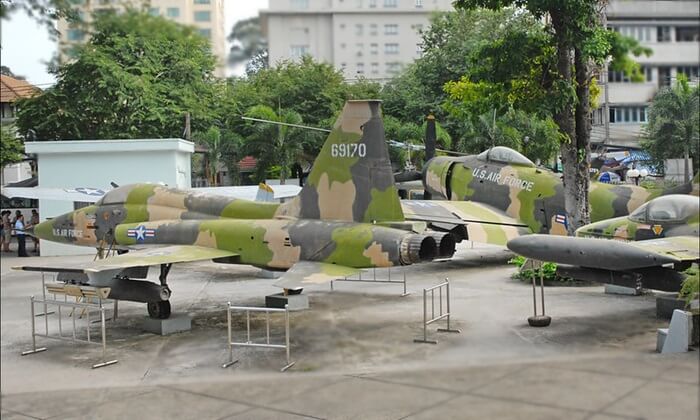
This question has both Yes and No for the answer.
Yes, if you want your children to research the war and history. But, you need to follow them and explain to them the terrible things that the wars and bombs destroyed. Then, make them grow a love for the people and encourage them to value the peaceful time in life.
No, there are many horrible and bloody photos on the second and third floors of the museum. These photos can haunt the minds of children. Thus, if you go with the children, you think twice when carrying them to the upper storeys of the museum. But, in the yard of the War Museum, there are a lot of planes and tanks that may give the children fun.
The War Remnants Museum is listed as one of the famous destinations in Ho Chi Minh City. Visiting this museum can help us understand more about the death of wars. Since then, we can love more the peaceful life of the present.
